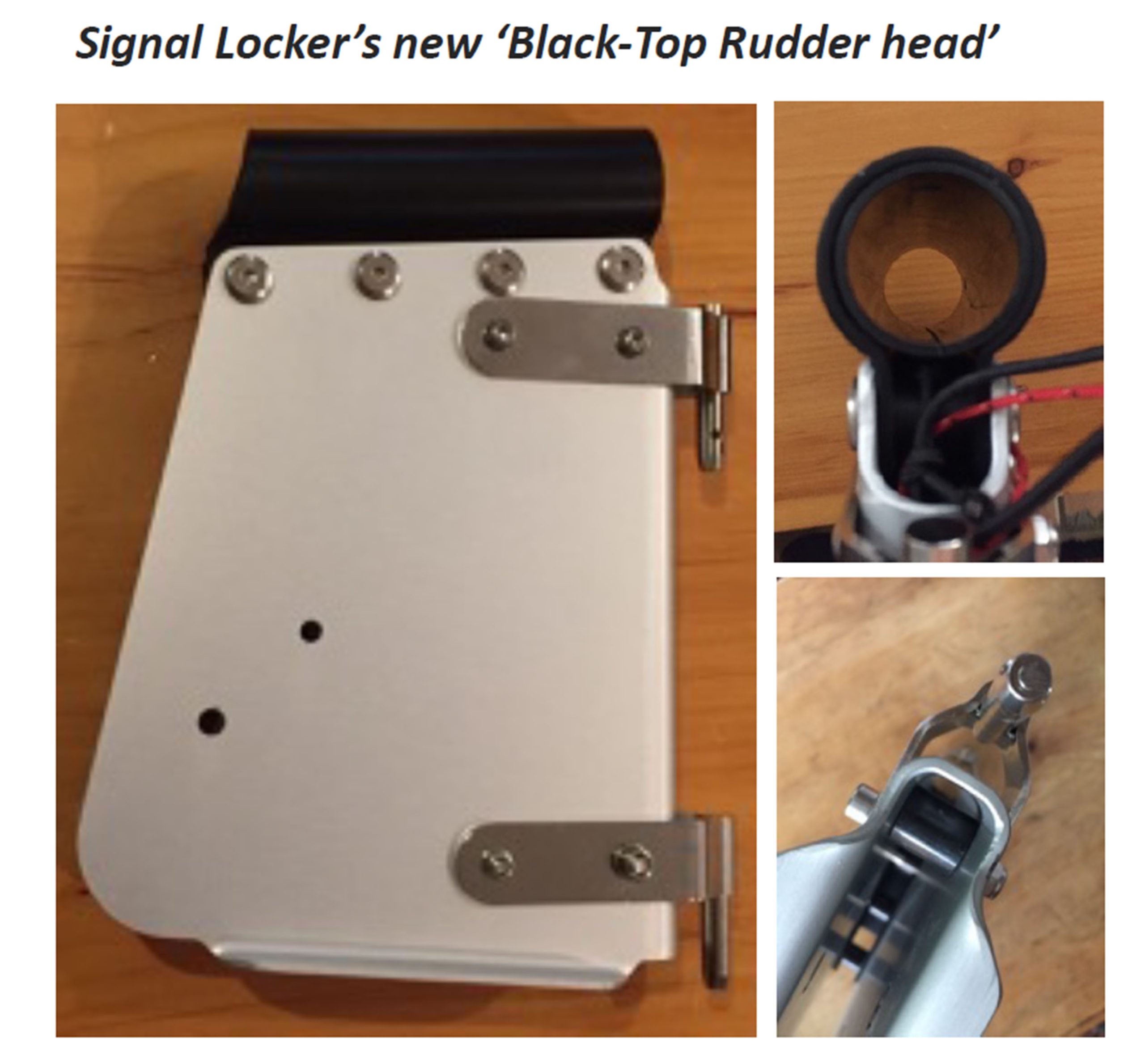Signal Locker’s new ‘Black-Top Rudder head’
Design…With this new rudder head we have set out to correct a number of shortcomings and to add some new features. Talking to Tasar sailors around the country we found quite a variety of requirements, mainly depending on launching arrangements. For those launching from a beach through surf it was important that the rudder could be held horizontal until it could be lowered – then it had to be easy to tighten. Some preferred the rudder not to be too tight in the rudder head so that it was easy to raise with an uphaul. Others expressed annoyance at the tendency for rudder to drop while on the trolley in the dinghy park. Some wanted to be able to adjust the angle of the leading edge to neutralize helm, and others said that the key thing was that the rudder stayed down when sailing. Everyone agreed that the tiller should be a good fit in the rudder head without any sideways or vertical movement.
So, quite a range of sometimes contradictory requirements. The production version of this new rudder follows three prototypes that all fell short in at least one respect.
Features…
- The side plates of the new rudder head are made from a single piece of aluminium that wraps around the front of the rudder and incorporates horizontal flanges at the lower edges. Both features add stiffness and overall rigidity to the rudder head.
- The pintles are the same stainless ‘strap’ design as the original Performance Sailcraft version; however in place of the old spring ‘keeper’, we use an R-Clip for greater security.
- The old stainless tiller hood with its rectangular section tiller, has been replaced by an aluminium tiller hood that takes a round tiller. Inside the tiller hood is a plastic liner – the tiller is a push fit making it easier to achieve a really rigid connection between tiller and rudder.
- Signal Locker supply a 31.75mm diameter carbon tiller tube, but you can use an aluminium tube or wood dowel if you prefer.
- The components of the rudder head are bolted together rather than riveted, allowing the assembly to be serviced and parts to be replaced.
- The pivot bolt is an 8mm stainless bolt with a nylon washer and wing nut. This makes it easy to lean over the transom and tighten the rudder head’s ‘grip’ on the rudder blade.
- There is a 6mm hole in the rudder side plates for an Acetal shear pin. This can be used in two ways:- firstly, while on the trolley in the dinghy park the rudder can be raised all the way up and the pin inserted to stop it dropping onto the concrete slipway. Secondly, when the rudder is all the way down you can push the shear pin through the rudder to stop it from creeping up while you are sailing. When used like this the pin will break when the rudder hits hard ground – though if the wingnut is very tight this is not totally reliable.
- Finally, the bolt that holds the lower pintle in place also holds a nylon cam between the side plates. This cam is the forward ‘bumper’ for the rudder blade. It is simply a spacer with the bolt hole drilled off-centre. By loosening the bolt and turning the spacer, you can adjust the angle of the leading edge of the rudder blade. Once adjusted you tighten the bolt, and thereafter when you push the rudder down to the stop it will adopt whatever angle you chose.
By design, the Tasar is light on the helm and responsive to small adjustments in weight distribution and sail trim. It is our hope that this new rudder will improve a helms ‘feel’ for the boat while at the same time eliminating some of the worst characteristics of previous designs.
